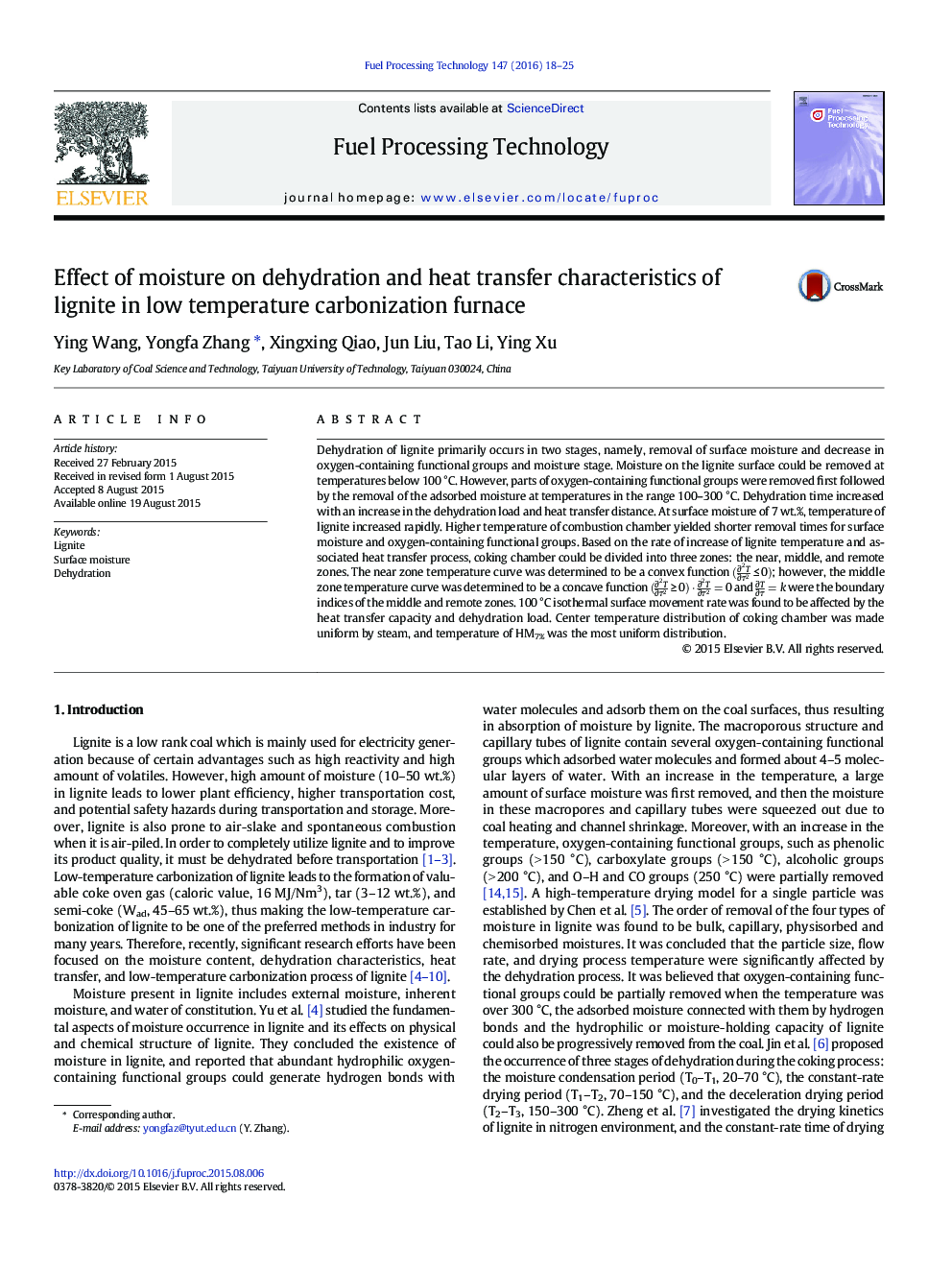| Article ID | Journal | Published Year | Pages | File Type |
|---|---|---|---|---|
| 209184 | Fuel Processing Technology | 2016 | 8 Pages |
•The dehydration process undergoes the two stages.•Surface moisture is conducive to dehydrate.•Heat transfer distance and dehydration load prolong the dehydration time.
Dehydration of lignite primarily occurs in two stages, namely, removal of surface moisture and decrease in oxygen-containing functional groups and moisture stage. Moisture on the lignite surface could be removed at temperatures below 100 °C. However, parts of oxygen-containing functional groups were removed first followed by the removal of the adsorbed moisture at temperatures in the range 100–300 °C. Dehydration time increased with an increase in the dehydration load and heat transfer distance. At surface moisture of 7 wt.%, temperature of lignite increased rapidly. Higher temperature of combustion chamber yielded shorter removal times for surface moisture and oxygen-containing functional groups. Based on the rate of increase of lignite temperature and associated heat transfer process, coking chamber could be divided into three zones: the near, middle, and remote zones. The near zone temperature curve was determined to be a convex function ∂2T∂τ2≤0; however, the middle zone temperature curve was determined to be a concave function ∂2T∂τ2≥0⋅∂2T∂τ2=0 and ∂T∂τ=k were the boundary indices of the middle and remote zones. 100 °C isothermal surface movement rate was found to be affected by the heat transfer capacity and dehydration load. Center temperature distribution of coking chamber was made uniform by steam, and temperature of HM7% was the most uniform distribution.
Graphical abstractThis abstract graphic shows the temperature profile as the heat transfer distance and carbonization time increasing in coking chamber.Figure optionsDownload full-size imageDownload as PowerPoint slide
